The 2017 Honda Clarity Fuel Cell is an electrical sedan that's powered by a hydrogen fuel-cell. It does not have to be charged however rather has to be sustained with hydrogen from a specialized (and pricey) station-- which there are few at this moment.
The Clarity goes on sale in Japan in spring of 2016, when this design reaches the United States, in late 2016, it will just be provided in California. Even then, it will be restricted, a minimum of at first, to pick dealerships in Los Angeles and Orange counties, in addition to the San Francisco Bay Location plus Sacramento. And this will be an extremely low-volume, lease-only design; think about sightings of this design, if you're not near among California's scholastic enclaves, and near a fueling station, to be as uncommon as those of unique supercar designs.
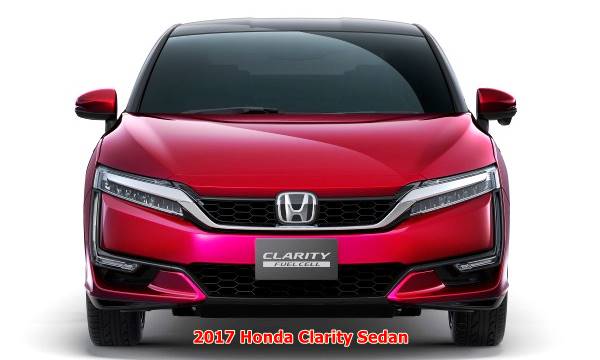 |
2017 Honda Clarity Sedan Review |
The Clarity Fuel Cell can be filled up in about 3 minutes if you are close adequate to filling system of the correct pressure and interactions user interface.
The Clarity Fuel Cell is the next in a long line of 'FCX fuel-cell cars that Honda has actually been constructing considering that 1999, a few of which have actually been checked in fleets and rented for business usage, and it follows the FCX Clarity, a somewhat smaller sized design that Honda rented about 50 of in the United States from 2008 to 2014.
This time around, the Clarity's competitors, if you 'd even call it that, are the Hyundai Tucson Fuel Cell and Toyota Mirai sedan-- both which are provided under likewise minimal terms. Toyota prepares to produce as much as 3,000 of its Mirai fuel-cell designs annually, while Honda prepares just to make a little portion of that.
2017 Honda Clarity Sedan - Styling and design
The 2017 Honda Clarity is successfully a size bigger than the design of the very same name that was made some years earlier. At around 193 inches long-- about the like the Honda Accord mid-size sedan-- the Clarity looks, initially glimpse, like it's progressed from near-equal impacts from that previous fuel-cell design, the Honda Insight hybrid, and the Honda Accord Crosstour fastback.
The 'kammback' design of the Clarity is familiar to those who have actually long followed high-efficiency green automobiles; the rakish fastback profile has a bit of a lift, with a popular lip spoiler at the tail. The Clarity consists of light-weight aerodynamic wheels, due to the harder sightlines and underbody aero panels, that the upkick in back presents-- an additional back window to assist with rear exposure and aid permit a bigger trunk.
Inside, the Clarity's traveler area is divided into 4 areas, one for each passenger, with the fuel-cell stack's tunnel developing dividing the cabin down the middle. A little shifter permits simple fingertip choice of forward, reverse, neutral, or park modes through a shift-by-wire system. The dash itself is ideal in action with other existing Honda designs, although the cockpit console itself provides a more futuristic, energy-focused design, and trims and door deals with do provide a futuristic departure from Honda's other production designs.
2017 Honda Clarity Sedan - Efficiency, effectiveness, and Fuel Cells 101
At an easy level, the Clarity Fuel Cell is powered by an electrical motor system, making 174 horse power and 221 pound-feet of torque, and driving the front wheels. The electrical power that powers it originates from a fuel cell, however it's handled by an advanced system that consists of a lithium-ion battery pack.
To dig a little bit more into the science, a hydrogen fuel-cell stack, which integrates lots of layers of proton exchange membrane cells, linked in series, to produce a high-voltage output. In these cells and hydrogen gas is passed over the electrode, producing an electron in a response with platinum utilized in the electrode.
With this generation of the fuel-cell stack-- V is for vertical orientation-- Honda has actually presented a vertical cell stack, for higher stability, enhanced cooling, and lowered size and weight. The 2017 Honda Clarity utilizes Honda's newest variation of its so-called V Circulation fuel-cell stack, packaged in the automobile's center tunnel, while the brand-new battery pack lithium-ion fits under the rear seat.
The fuel cell runs the majority of the time that the car is moving; on the other hand, a lithium-ion battery pack assists record energy from braking-- or unused energy developed by the fuel cell-- and shops it away, to be launched when it's required for effectiveness or unexpected power needs.
While we have not yet driven the brand-new Clarity Fuel Cell, we anticipate it to drive similar to an electrical vehicle-- with simply a little background hum from the compressors that feed the fuel cells. Velocity and efficiency are compared to that of a 2.4-liter four-cylinder gas car of the very same size, while the instant torque shipment of this design's electrical motor system must make it feel especially positive from a standing start.
In total energy performance, Honda declares that the Honda Clarity is 3 times as effective as a normal compact gas car and two times as effective as a compact hybrid gasoline-electric car. The Clarity Fuel Cell can now tackle 435 miles of variety (based upon an infamously generous Japan-market driving cycle).
A pure battery-electric automobile, charged from the grid, is still more energy-efficient, nevertheless, in essentially all cases. And to offer buyers that alternative, and the alternative of a gas engine under the hood, a Plug-In Hybrid Electric Car variation of the Clarity is on the method for 2018 and will provide in the variety of 40 miles or more of all-electric variety-- more than triple that of the Accord Plug-In Hybrid design that's been on sale up till this year.
2017 Honda Clarity Sedan - Convenience and energy
The Clarity is improved a uni-body building, with a double-wishbone suspension and electrical power steering. Honda states that this design's turning radius is simply 17.7 feet.
Regardless of the futuristic power source, Honda has actually crafted the Clarity in accordance with its "guy optimum, maker minimum" design approach. The interior is made of a plant-derived Honda Bio-Fabric, while front seats themselves are climate-controlled.
There are beverage holders for each resident, along with different trays and storage cubbies-- consisting of doors pockets and center-console area-- and there's under-trunk storage. The trunk itself is 11.1 cubic feet-- little, however most likely appropriate for a generous go to the supermarket, with guests taking all 4 seating areas.
The user interface in the Clarity seems an advancement of exactly what we have actually seen in the previous FCX Clarity in addition to that of the Honda Fit EV-- here consisting of a three-dimensional screen with meters for hydrogen usage (a ball-shaped gauge), battery levels, motor output, and journey and performance info.
2017 Honda Clarity Sedan - Security and functions
Security functions determine up completely to those in other highly advanced designs presently on the market. And of course there are different included functions to make sure the hydrogen fuel source is safe for fender-benders and crashes, and up to the rigors of daily driving.
We'll likely upgrade this sneak peek of the 2017 Honda Clarity Fuel Cell with more details and driving impressions prior to when shipments begin, next summer season.

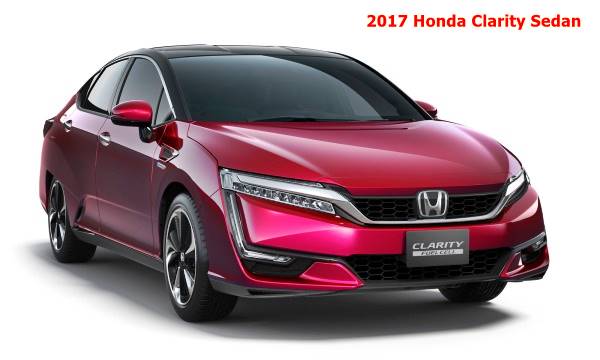
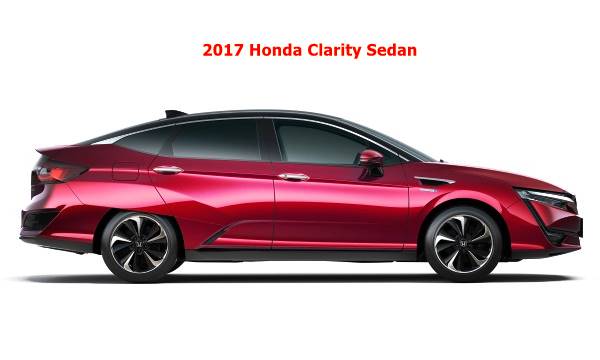
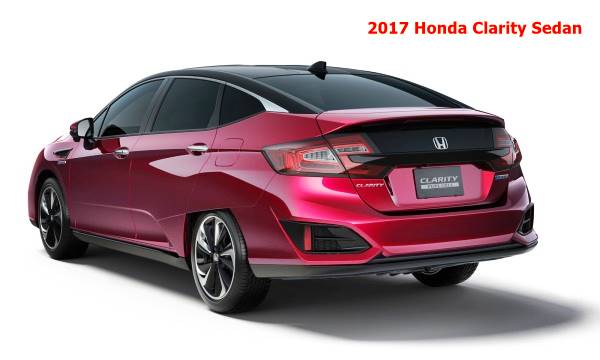
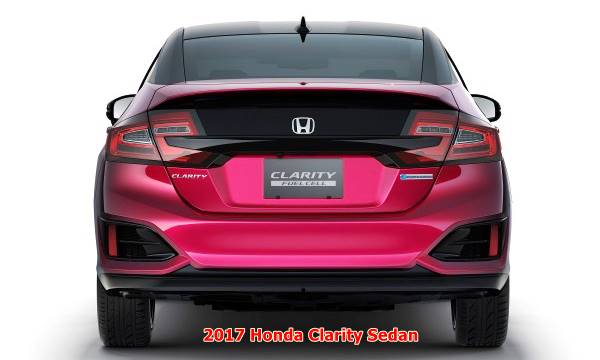
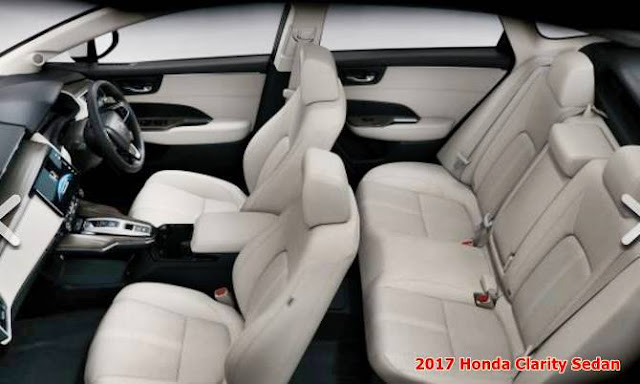




0 Comments:
Post a Comment